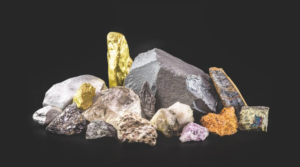The recent fallout between Ukrainian President Volodymyr Zelensky and former U.S. President Donald Trump has reignited concerns about America’s strategic vulnerabilities—none more pressing than its reliance on foreign sources for Critical Minerals (CM). As geopolitical tensions mount, the urgency for the United States to secure, source, mine, process, and refine its own critical mineral supply chain has never been clearer. The Department of the Interior has defined CM as essential to national security, economic stability, and technological innovation, yet the country remains heavily dependent on adversarial nations, particularly China, for their supply. This must change, and a key solution lies in an often-overlooked resource: domestically mined waste and tailings.
The Geopolitical Wake-Up Call
The dispute between Ukraine and Trump underscores the fragility of international alliances and the unpredictability of relying on foreign partners for essential commodities. As the U.S. seeks to limit its reliance on China—currently controlling over 80% of the global rare earth elements (REE) supply chain—it must recognize that many of these critical materials can already be found in America’s own backyard. Instead of waiting years for new mines to be permitted and developed, America has a unique opportunity to leverage existing mining waste and tailings as an immediate, domestic supply source.
PTOE Corporation CEO Zach Burd weighed in on the issue, emphasizing the widespread lack of understanding regarding the importance of critical minerals. “Like much of the world, Ukrainian President Zelensky doesn’t fully grasp what it takes to produce the technology that modern civilization depends on. I was proud to see President Trump take a stand, and I hope this moment serves as a catalyst for serious investment in domestic critical mineral supply chains.”
A Critical Resource Hidden in Plain Sight
Mining waste and tailings—byproducts of historical and current mining operations—contain significant quantities of critical minerals. Many of these materials were discarded when processing methods were less advanced, or when certain elements were not in demand. Today, with improved extraction technologies, these sites could provide a near-term solution to bridge the supply gap while further exploration and mining projects come online.
Advantages of Utilizing Tailings for CM Production
- Permitted Sites: Many tailings’ locations are already permitted for mineral processing, significantly reducing the bureaucratic hurdles associated with opening new mining operations.
- Immediate Supply Chain Potential: With processing facilities in place, material from tailings could enter the market quickly, helping to counteract China’s dominance in the sector.
- Environmental and Economic Benefits: Extracting valuable minerals from tailings helps remediate environmental hazards while simultaneously creating domestic jobs and revitalizing mining communities.
- Reduced Dependence on Adversarial Nations: By tapping into domestic resources, the U.S. can significantly reduce its vulnerability to supply chain disruptions caused by geopolitical tensions.
Zach Burd isn’t alone in his concerns. Industry experts echo his sentiments, stressing the urgency of leveraging existing resources. “We have the means to jumpstart our domestic supply chain right now,” said a senior mining executive. “Tailings and waste materials hold untapped value that could help us break free from foreign reliance and secure our future in critical technology sectors.”
Strategic Policy and Investment Needs
For this approach to succeed, the U.S. government and private sector must collaborate on several fronts:
- Investment in Advanced Processing Technologies: Cutting-edge methods such as bioleaching, solvent extraction, and nanotechnology can make the recovery of critical minerals from tailings more efficient and cost-effective.
- Legislative and Regulatory Support: Streamlining permitting processes and providing incentives for companies to invest in tailings reprocessing can accelerate domestic CM production.
- Public-Private Partnerships: Government funding and incentives should encourage partnerships between mining companies, universities, and technology firms to develop innovative solutions.
- Strategic Stockpiling: The U.S. should establish a national reserve of critical minerals to ensure supply security in times of geopolitical instability.
Conclusion
The fallout between Ukraine’s President and Trump serves yet another reminder of the United States’ precarious reliance on foreign mineral supply chains. Instead of leaving national security and economic growth at the mercy of geopolitical shifts, the U.S. must take decisive action to secure its own resources. By turning to previously mined waste and tailings, America can create a resilient, sustainable, and independent supply chain for critical minerals—bolstering both economic stability and national security. The time to act is now.







